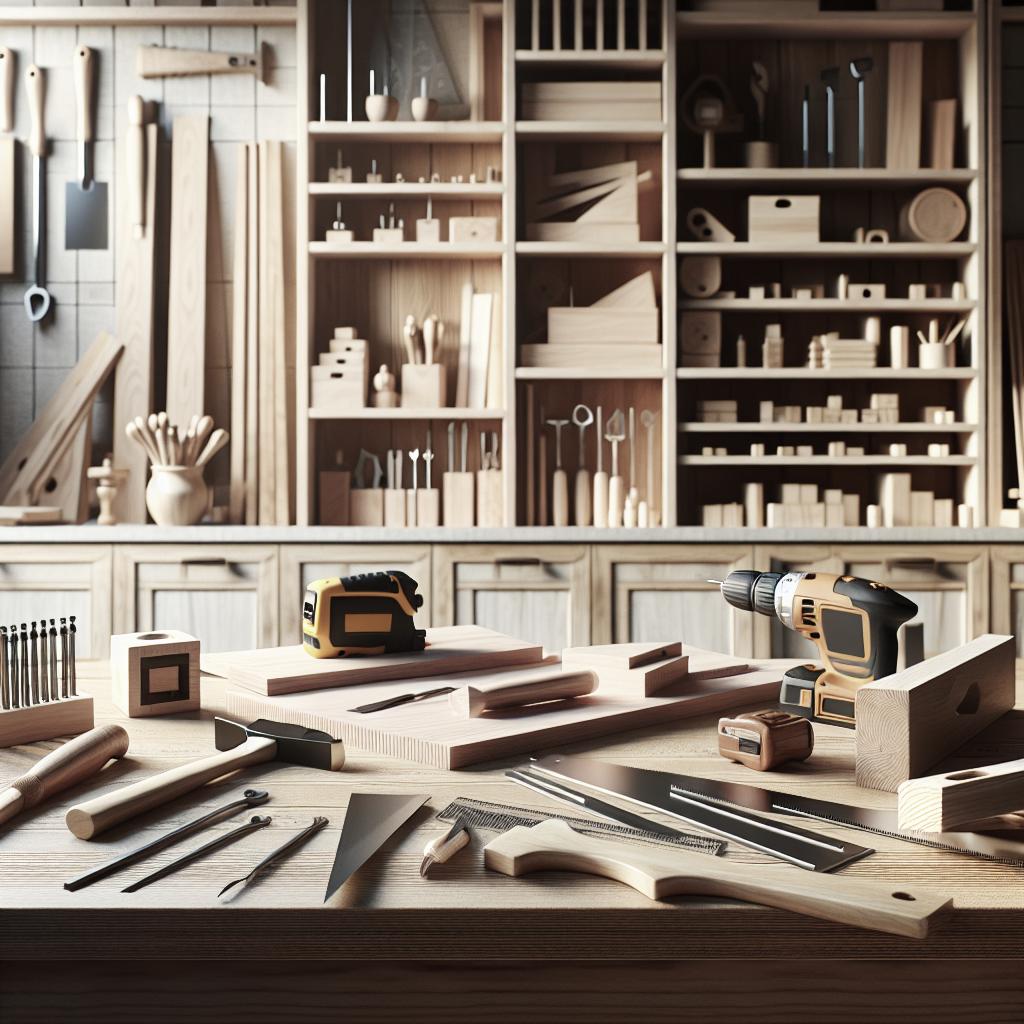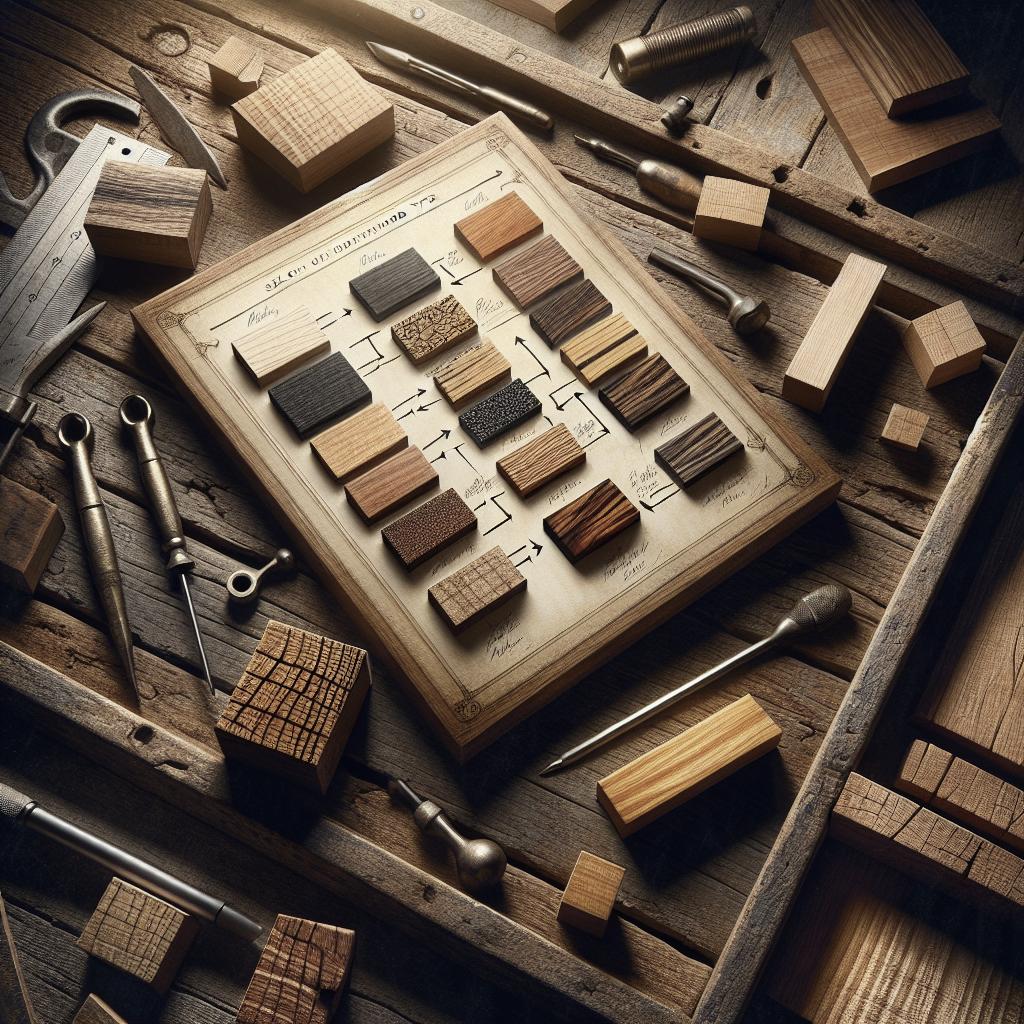“`html
How to Understand and Use Woodworking Plans Effectively
Woodworking is a delicate craft that brings together creativity, precision, and technical know-how. Whether you’re a hobbyist or a seasoned artisan, understanding and effectively using woodworking plans can make the difference between a rough cut and a masterpiece. This guide will introduce you to the essentials of delving into woodworking plans. It covers fundamental aspects like plan readability, measurement accuracy, and symbolism, as well as advanced strategies for interpreting complex details. With helpful tips on measuring and deciphering woodworking jargon, you’ll build confidence in your craftsmanship and bring your creative visions to life.
Mastering the Fundamentals: Understanding Plan Readability and Symbolism
To embark on a successful woodworking project, the first step is deciphering the woodworking plans. These plans contain detailed instructions in the form of drawings, symbols, and notes that guide you through the construction process. Understanding the common structural layout of these plans is crucial. Typically, they include a parts list, exploded views, and detailed drawings, each providing valuable insights into the project.
Symbols serve as a shorthand in these plans, representing different parts, joints, or actions such as cutting or drilling. Familiarity with these symbols is essential for a seamless woodworking experience. Spend some time getting to know commonly used symbols in woodworking plans or reference guides—it’s the language that links your dream project to its physical creation.
Deciphering Measurement and Scale: A Beginner’s Guide to Accurate Interpretation
One of the most important elements of woodworking plans is the measurement and scale. Accurate interpretation of these is vital to construct a project exactly as intended. Plans are typically drawn to scale, meaning the measurements on paper directly correspond to the actual dimensions of the project. Understanding how scale works will help avoid costly mistakes.
Look for the scale notation on the woodworking plan, which tells you the ratio of the drawing’s dimensions to the real-world object. For beginners, it may help to work with standard scales, such as 1:1 or 1:2, to simplify the construction process. Practice with smaller projects to build confidence in interpreting scale before moving onto larger, more complex projects.
Understanding Measurement Notations
Measurement notations in woodworking plans can initially seem daunting, but they are essential as they provide the numbers needed for precise cuts and fits. It’s crucial to understand various forms of measurement notations such as metric, imperial, and decimal notations, as plans can include any or a combination of these.
For instance, understanding that 2.5 cm is equivalent to approximately 1 inch can be critical when converting measurements. Ensure you have a reliable conversion chart handy, especially if you frequently work with plans from different regions where measurement systems may vary.
Identifying Scale and Unit Conventions
Scale and measurement units are fundamental in interpreting the proportions and dimensions of woodworking plans. The plans could use varying unit conventions based on geographic origin or intended audience. Typically, countries using the metric system will employ millimeters or centimeters, whereas regions with the imperial system utilize inches and feet.
On occasions, plans may incorporate both scales, requiring you to be flexible in your reading skills. Becoming adept at identifying these conventions and converting as necessary will enhance your ability to accurately carry out intricate woodworking projects.
Key Measurements to Double-Check
To prevent woodworking mishaps, there are key measurements that require double-checking before beginning a project. Critical dimensions such as lengths, widths, and depths should be verified against the full-scale plan to avoid potential inaccuracies.
Attention should also be paid to joinery-related measurements, as these ensure that parts fit together seamlessly. Checking and rechecking will save you time, materials, and money in the long run, making double-checking an essential part of your woodworking routine.
Tips for Accurate Measurement
Accurate measurement is the cornerstone of successful woodworking. Ensuring accuracy starts with reliable tools such as a sharp, precise ruler, and a well-calibrated measuring tape. Always measure twice and cut once; this old adage helps reinforce the care needed for precision.
Another useful tip is to mark clearly and cut accordingly. Light pencil marks can be an aid during cutting processes. Additionally, taking environmental factors into account, like wood expansion due to humidity, can save you from potential fitment issues.
Enhancing Your Visual Vocabulary: Identifying and Understanding Woodworking Symbols and Notations
To effectively read a woodworking plan, enhancing your visual vocabulary is vital, as it involves recognizing and understanding various symbols and notations. These often indicate types of wood, grain direction, and finish type. Becoming familiar with these visual cues helps streamline the construction process.
Consider creating a personal glossary of symbols and notations for quick reference. Whether you’re building a simple shelf or a complex cabinet, knowing what each symbol represents can help bridge the gap between concept and execution.
Taking it to the Next Level: Advanced Strategies for Working with Complex Plan Details
Advanced woodworking projects often come with complex plans that include intricate details. Developing strategies to manage such complexity involves breaking down the plan into actionable sections. This can make the project feel more manageable while ensuring all details are attended to methodically.
Utilizing software tools to visualize plans in 3D can also provide better insights, helping to identify potential issues before they arise. Embracing technology alongside traditional skills can elevate your craftsmanship to new heights, facilitating master-level projects.
Next Steps
| Section | Highlights |
|---|---|
| Mastering the Fundamentals | Understanding plan readability and symbols is crucial for project success. |
| Deciphering Measurement and Scale | Accurate interpretation of measurement and scale can prevent costly errors. |
| Understanding Measurement Notations | Familiarize yourself with metric, imperial, and decimal notations for precision. |
| Identifying Scale and Unit Conventions | Recognizing scales and units ensures projects are constructed as planned. |
| Key Measurements to Double-Check | Verify critical dimensions and joinery for seamless construction. |
| Tips for Accurate Measurement | Use reliable tools and consider environmental factors for precision. |
| Enhancing Your Visual Vocabulary | Familiarity with woodworking symbols aids in plan interpretation. |
| Advanced Strategies for Complex Plans | Employing strategies and technology for tackling intricate woodworking projects. |
“`


